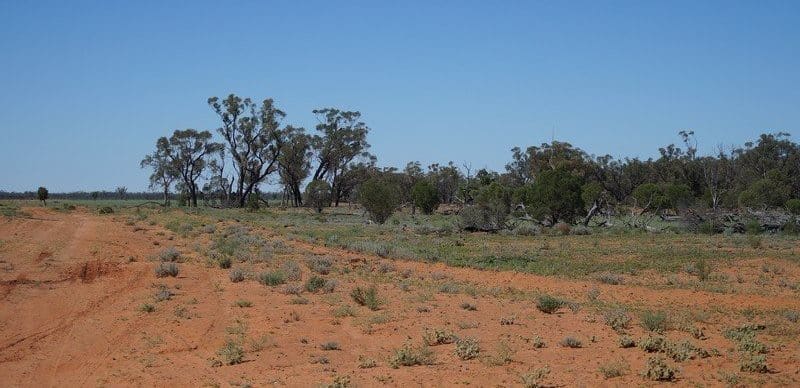
THE south-western portion of Queensland west and south of Charleville has seen a number of speculative special interest purchasers who have acquired country at a premium, with the sole intention of establishing carbon projects, valuer Herron Todd White reports.
An interesting trend for 2017 actually saw a 350 percent increase in the sales rate within the region’s Paroo Shire, albeit from a low base. In the area, a number of larger corporate companies have exited the market, and these properties primarily acquired by local and interstate grazing operators.

HTW’s Stephen Cameron
Within the Paroo Shire alone, there have been some 1.055 million Australia Carbon Credit Units (ACCUs) issued by the Australian Government Clean Energy Regulator through 39 projects, HTW’s Stephen Cameron reports.
The projects in the Shire are all registered under the permanent native forests through assisted regeneration from in-situ seed land use modelling. The methodology effectively promotes the revegetation of the lands by reducing stocking pressure.
In most cases, the existing grazier has opted to encumber part of their property (ranging from about 10pc to 30pc) to access cash flow through the sale of ACCUs over normally a contracted term of ten years.
“On the other hand, we have also seen cases where the country has been purchased by special-interest purchasers who want to fully realise the cash-flow benefits by registering a project over a larger area, with some encumbering the whole property,” Mr Cameron said.
Whilst the contracted sequestration of carbon is achieved, there is the significant financial benefit. However, by registering such agreements, there is a legal liability incurred, plus ongoing management of the carbon project over its permanency period which can be either 25 or 100 years.
“The question that should be considered when either entering into these agreements or buying a property with a project is what impact the project has on the asset,” Mr Cameron said.
“There is likely to be a reduction in the productivity, but there may also be liability risks incurred as well as the cost to manage the carbon area or project over the permanency period.”
How the market treats encumbrances created by a carbon project on a grazing business was currently uncertain, and would not be fully qualified until the contract period expires, Mr Cameron said.
“When this occurs, there will be less focus on the short-term financial benefits and a greater consideration of the ongoing impacts and costs to the business operation without a financial return. In this modern age, there is no such thing as free money.”
Source: HTW

It seems to be a rather absurd arrangement to my way of thinking.
Because when you think about it, the entire climate change situation is caused by the burning of fossil fuels which emits CO2 that previously along time ago was converted into carbon (split from CO2), then buried deep underground.
In the meantime the above ground vegetation continues the cycle of absorbing, CO2, splitting the O2 off it and releasing the O2 and using the carbon. Then down the track the tree dies and a lot of the absorbed carbon gets converted to CO2 again, in one way or another. Then the cycle continues.
Then the human comes along and digs up the sequestered CO2 from millions of years ago and releases it back into the atmosphere.
So these schemes to pay people to grow trees is clearly absurd as the trees will nearly always get converted mostly back into CO2 eventually even if it takes two hundred years, it will get there in the end.
The issue is fossil fuel burning, but I have not yet heard a politician say they will restrict plane travel or car use to reduce fossil fuel use. They always find a small scapegoat group to blame so the real problem people can feel good about themselves.
But there is heaps of money to be made in the meantime in those carbon credit hills.
This is such a complicated issue, as the impact can be long lasting (100 years depending on contracts). There will be a loss in agricultural production as the canopy increases within a project area, the amount could be over 50%. Does the loss in production get compensated by the carbon payments and the benefit to the environment? The principle behind the sequestration is good, however the companies facilitating the contracts and payments from the government to the farmer are making all the money. Depending on the contracts, they can be paid a commission on the carbon payments to the farmer (20% in some cases). Whats worse, is that the tool to measure carbon sequestration is based on computer models, but the company facilitating the payments to the farmer have authority to alter the calculation (within the model) of carbon sequestrated over a certain area over a certain time. This is so that allowances for droughts/rain etc can be factored in, hence determining the amount payable to the farmer and the commission to themselves. This is a clear conflict of interest that I believe is being exploited currently.